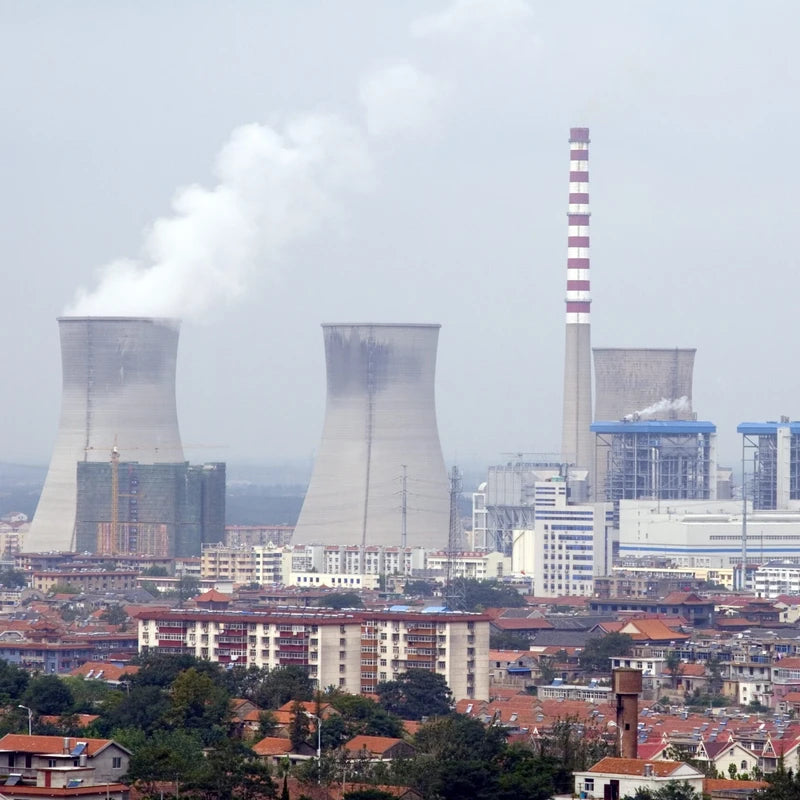Nuclear power plants are a significant source of energy worldwide, providing approximately 10% of the global electricity supply. However, living near these facilities raises public concern about safety and health risks. As the world debates the merits of nuclear energy in combating climate change while managing the associated hazards, understanding the potential risks is crucial. This article will outline the key risks associated with living near nuclear power plants, focusing on health, safety, and community impacts.
Understanding Nuclear Power
Nuclear power harnesses the energy released during nuclear fission, a process where atomic nuclei split. This method generates a substantial amount of electricity with relatively low greenhouse gas emissions, making it an essential part of the current energy landscape.
Various nuclear reactor types exist, including pressurized water reactors (PWR) and boiling water reactors (BWR). PWRs use pressurized water to transfer heat from the reactor core to a secondary loop, while BWRs boil water directly in the reactor core to generate steam. Each type has distinct functions and safety measures.
The nuclear power pros and cons debate is multifaceted. On the positive side, nuclear energy reduces dependence on fossil fuels and produces low greenhouse gas emissions. However, it also generates radioactive waste, poses risks of accidents, and raises concerns about long-term safety.
Health Risks
Living near nuclear power plants may expose residents to radiation, primarily from routine operations and potential accidents. While the radiation levels are generally kept within safety limits, prolonged exposure can have health impacts, including an increased risk of cancer.
To ensure safety, the use of radiation monitoring devices, such as the Milerd dosimeter, is essential for residents in nearby communities. These devices help track radiation levels and alert individuals to potential hazards, allowing them to take precautionary measures if necessary.
Numerous public health studies have assessed the health risks associated with living near nuclear power plants. Some research indicates a correlation between long-term exposure to low-level radiation and increased rates of certain cancers, emphasizing the need for continuous monitoring and community awareness.
Safety Concerns
Nuclear power plants are designed with multiple safety measures, including containment structures, redundant cooling systems, and emergency protocols. These safety features aim to minimize the risk of accidents and protect both the public and the environment.
In addition to safety measures, nuclear plant security is a critical concern. Security protocols are in place to protect against potential threats, including terrorism or natural disasters. Regulatory agencies continually evaluate these measures to ensure they remain effective.
Established radiation exposure limits are set by organizations such as the Environmental Protection Agency (EPA) and the International Atomic Energy Agency (IAEA). These limits are designed to protect public health by monitoring and enforcing safe levels of exposure to radiation in surrounding communities.
Community Impact
Various community health initiatives aim to educate and protect residents living near nuclear power plants. These programs provide information on radiation safety, emergency procedures, and health resources, fostering a safer environment for affected communities.
Effective community education programs are essential for informing residents about the risks and safety measures associated with living near nuclear facilities. These initiatives promote awareness and encourage proactive measures to mitigate potential health hazards.
Residents can access public health resources tailored to those living near nuclear power plants. These resources include health screenings, informational workshops, and access to medical advice regarding radiation exposure.
Addressing Public Concerns
The nuclear energy debate is ongoing, with strong opinions on both sides regarding its benefits and risks. While nuclear power can significantly reduce carbon emissions, concerns about safety, waste management, and potential accidents persist.
Staying informed about local nuclear power plants is essential for residents. Engaging with community initiatives and participating in public discussions can help individuals make informed decisions regarding their safety and health.
Considering long-term risks is vital when planning residential developments near nuclear facilities. Local governments and planners should assess potential impacts and involve the community in decision-making processes.
Conclusion
In summary, living near nuclear power plants involves various risks, including health concerns, safety protocols, and community impacts. Understanding these factors and engaging in community health initiatives can empower residents to navigate the complexities of nuclear energy. We encourage readers to participate in discussions about nuclear power in their areas and stay informed about local resources and safety measures to ensure a healthier future.



Hinterlasse einen Kommentar
Diese Website ist durch hCaptcha geschützt und es gelten die allgemeinen Geschäftsbedingungen und Datenschutzbestimmungen von hCaptcha.